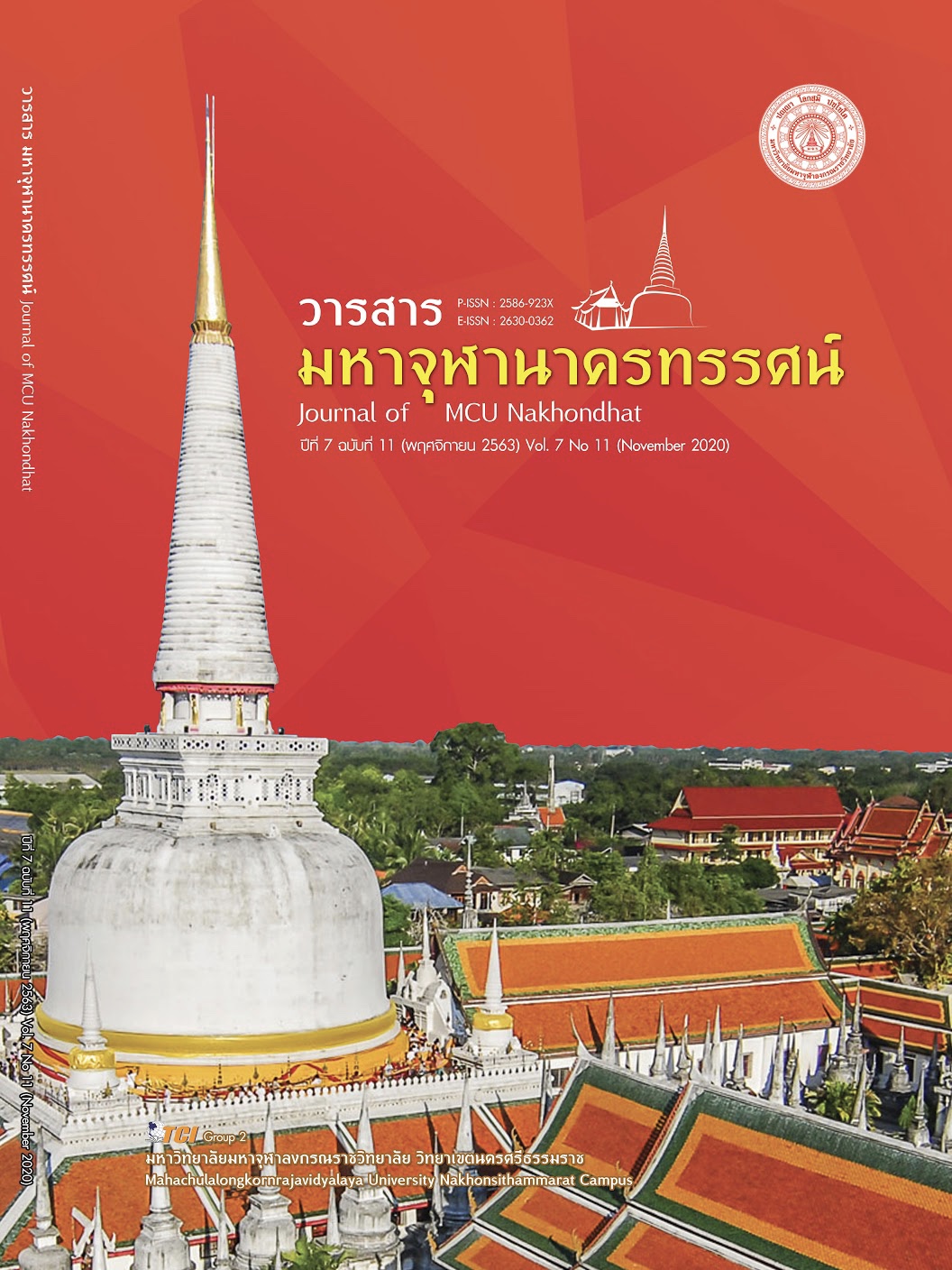THE STUDY BUDDHISM IN THE 21ST CENTURY
Main Article Content
Abstract
Buddhism is an important cultural foundation of Thai society and has long been a formulation of the principles and teachings of Buddhism to Thai society. At the world society and Thai society enter the 21st century society or the world without borders, the Thai society has to face more crises in many areas, such as economic problems. Social and environmental problem, etc. The study of the principles of Buddhism in the 21st century requires two parts to be improved: 1) Buddhist teaching skills for the development of humanity in behavior can be developed with precepts. The mind can be developed with concentration. To be easy to understand, easy to remember and able to be practical; and 2) the use of information technology in Buddhist studies Propagating the principles of Buddhism to suit the consumer groups. States and the Church need to work together to resolve problems and to support the introduction of the principles of Buddhism to spread to the public easily. It can be applied to life in conjunction with the building of quality of life. Buddhism has been in the world society for centuries. Through the time that has prospered until today because of the spread that can be applied to different societies. In the present era, when technology has advanced a lot Buddhism, if viewed on the surface, will contradict the trend of technology. Because it is a capitalist society that is mainly greedy But if you look at the other side, the technological boom is not a bad thing. At the user separately If the user has a stable mental immunity. Technology will become a tool for Buddhism to spread to people for a long time, which will benefit to solving various crises of society sustainably.
Article Details
References
เดวิด ดับเบิลยู จอห์นสัน และโรเจอร์ ที จอนห์สัน. (2554). การเรียนรู้แบบร่วมมือและการแก้ไขความขัดแย้งทักษะที่จำเป็นแห่งศตวรรษที่ 21, ทักษะแห่งอนาคตใหม่ การศึกษาเพื่อศตวรรษที่ 21. วรพจน์ วงศ์กิจรุ่งเรือง และอธิป จิตตฤกษ์ (แปล). กรุงเทพมหานคร: Open world.
คณะกรรมาธิการนานาชาติว่าด้วยการศึกษาในศตวรรษที่ 21. (2540). การเรียนรู้ : ขุมทรัพย์ในตนจาก learning : the treasure within. ศรีน้อย โพธิ์วาทอง และคณะ (แปล). กรุงเทพมหานคร: สำนักงานคณะกรรมการศึกษาแห่งชาติ.
ดาณุภา ไชยพรธรรม. (2556). เทคโนโลยีดาบสองคม. กรุงเทพมหานคร: มายิก สำนักพิมพ์.
ประเวศ วะสี. (2545). วิถีมนุษย์ในศตวรรษที่ 21: สู่ภพภูมิใหม่แห่งการพัฒนา. กรุงเทพมหานคร: มูลนิธิสดศรี-สฤษดิ์วงษ์.
พระไพศาล วิสาโล. (2552). กระบวนการเรียนรู้แบบพุทธ. เรียกใช้เมื่อ 20 กันยายน 2562 จาก https://www.visalo.org/article/budKrabuankarn.htm
พระพรหมคุณาภรณ์ (ป. อ. ปยุตโต). (2539). การศึกษาเพื่ออารยธรรมที่ยั่งยืน. (พิมพ์ครั้งที่ 3). กรุงเทพมหานคร: มูลนิธิพุทธธรรม.
. (2539). วินัยเรื่องที่ใหญ่กว่าคิด. กรุงเทพมหานคร: โรงพิมพ์คุรุสภา.
. (2550). วิธีคิดตามหลักพุทธธรรม. กรุงเทพมหานคร: ธรรมสภา.
วิชัย วงศ์ใหญ่. (2557). สี่เสาหลักของการศึกษา. เรียกใช้เมื่อ 22 กันยายน 2562 จาก www.curriculumandlearning.com/upload/สี่เสาหลักทางการศึกษา_1400078221.pdf
สำนักเลขาธิการสภาการศึกษา. (2550). รายงานเบื้องต้นการเสริมสร้างคุณธรรมในระบบการศึกษาไทย. กรุงเทพมหานคร: วี.ที.ซี.คอมมิวนิเคชั่น.
สุวิทย์ เมษินทรีย์. (2550). โลกพลิกโฉม : ความมั่งคั่งในนิยามใหม่ = Post knowledge based society. กรุงเทพมหานคร: บริษัทมีเดีย แอสโซซิเอตเต็ด จำกัด.
อัลวิน ทอฟฟเลอร์. (2538). คลื่นลูกที่สาม (The third wave). สุกัญญา ตีระวนิช และคณะ (แปลและเรียบเรียง). (พิมพ์ครั้งที่ 3). กรุงเทพมหานคร: นานมีบุ๊คส์.
Howord Gardner. (1993). Multiple Intelligence: The Theory in Practice. New York: Basic Books.


